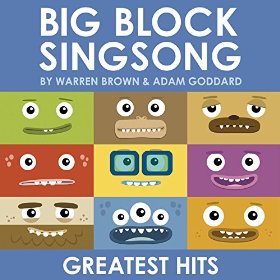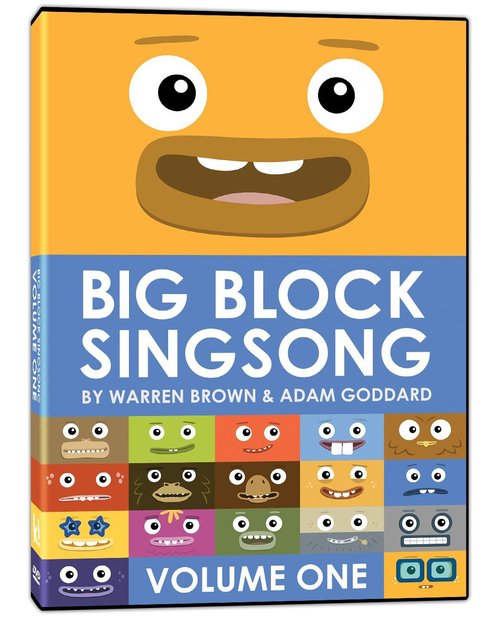I praise the willingness of musicians to follow wherever their idiosyncratic muse takes them, and by that measure, few kids musicians would receive higher praise than Michigan's Jeff Krebs, aka Papa Crow. It's not that he changes musical styles dramatically from album to album -- you can hear his gentle folk-pop on his fine albums Things That Roar and Full Moon, Full Moon and you can also hear it on his EP about farting and tooting, What Was That Sound?. It's the subjects that are wildly different.
You can also hear his folk-pop on his latest EP, Their Heads Are Green and Their Hands Are Blue. His subject this time? The nonsense poems of 19th century writer Edward Lear. Accompanied with nothing but his vintage 1947 Gibson guitar, Krebs tells these stories through melodies he's written for the album. Lear might be most well-known for his poem "The Owl and the Pussycat," which Krebs includes here, but the strongest songs to my ear are the leadoff track, the sea-shanty-like "The Jumblies," and the blues-y "Calico Pie." (Special shout-out to Krebs for recording the 110-line "The Courtship of the Yonghy Bonghy Bo," which Krebs reports took him 54 attempts to reach a suitable take.)
The album will be most appropriate for kids ages 4 through 8. You can stream and purchase the 19-minute EP here. Kids will need to be in the right frame of mind to enjoy the songs here -- they do require some attention -- and these may work better mixed in with other songs, rather than in one set. But it's a fun album nonetheless. Settings of 150-year-old poetry to song is probably not the way to kindie fame and fortune, but I'm glad that Papa Crow has chosen to explore this particular side path. Recommended.
Note: I was given a (digital) copy of the album for possible review.












